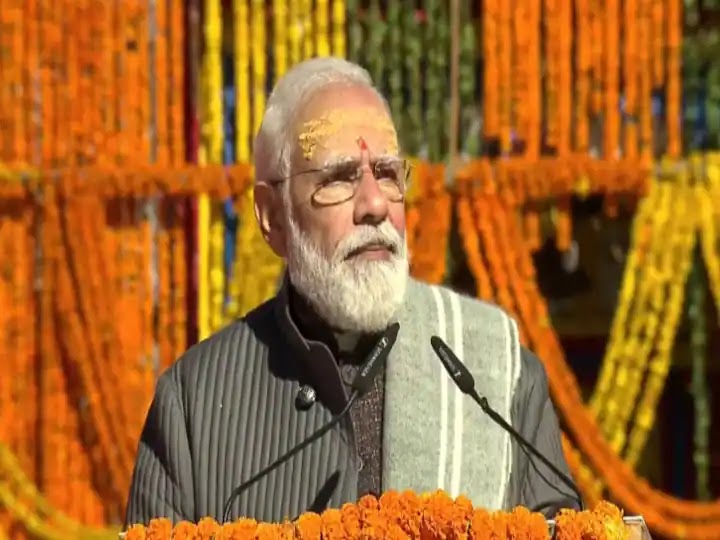KATHOUPANISHAD - 81. Swami Advayananda.
 ==========================================================================================================================================
==========================================================================================================================================Saturday 29, March 2025, 16:15.
KATHA UPANISHAD
Part 2 – Total 49 Mantras
Chapters 2.1, 2.2 & 2.3
Chapter 2.2: (15 Mantras)
THE SEARCH FOR BRAHMAN
Mantram - 2.2.3: Brahman – Director of Pranas & Deities
Post - 81.
===========================================================================================================================================
Mantram - 2.2.3: Brahman – Director of Pranas & Deities:
1 Oordhvam praanam unnayati = He (Brahman) sends Prana upwards.
2 apaanam pratyak asyati; = He throws the Apana downwards.
3 madhye vaamanam aaseenam = that Adorable One seated in the centre
4 vishwe devaah upaasate. = is He that is worshipped by all the Gods
=====================================================================================================================================
From the Presence of Brahman in the vast Cosmos, we shift to the role or function of
Brahman. What does He do there? How do we recognise His Presence everywhere and in
everyone. Again, the Rishi starts by considering the Lord in the body.
1-2 The most obvious function of the Supreme Lord in the body is seen in the power
and energy provided by the Life Principle or Prana. Every body function happens because of
Prana. There are 5 aspects to this Prana; the two most important ones, representing the
incoming and the outgoing breath, are mentioned, but the other three are implied.
All these different functions performed within the body are controlled by Brahman,
the Supreme Lord, with Prana being His agent or Deity. And Prana is only one example.
3 A graphic picture is presented by the Rishi of how the Lord executes His function.
Just as the boss in a factory, the Lord has His own office; He sits in the well-known ‘heart
centre’ frequently referred to in Vedic literature. The office is the intellect, which is like the
“Control Room” for the whole body. The Self sits there in the centre and directs the Pranas
to perform their functions: “O Prana, you go upwards; and you, O Apana, your job is to go
downwards!” The idea being conveyed is that the Lord gets things done just through His
very Presence. He does not have to raise a finger; He has his Deity-officers to do that.
An Illustrative StoryP
Acharyaji was here reminded of a story:
A man went to a Government office to see the Chief Minister. He was told that the
Minister was not in. However, he said he would wait. Time went by. Again he went to the
secretary. She said, “I told you he is out. You should come on another day.” The man was
unmoved, he continued waiting. By evening, the secretary looked very concerned. She went
inside the Minister’s office. In a short while the Minister himself came out to meet the man.
He asked, “How did you know that I was in?” The visitor said, “I could see everyone busy at
their work. So I knew you were in!”
Acharyaji gave other common examples to illustrate the point further. When we see
a TV on, we know that someone must have switched it on, even if it was with a remote.
When the house furniture is neat and clean; when all equipment is functioning well; when
the garden is trimmed – then we know that someone is living in the house. The garden
cannot be the owner of a home, nor can the equipment, nor the furniture. They indicate the
presence of an owner.
4 All matters are referred to this Boss by the subsidiary powers or Deities of all the
functions of the body. That is what “worshipped by all the Gods” means. They all have to
take their orders from the central office. The Deities could also mean the sense organs, for
they bring the information of the sense objects to the Self. They “worship” their Lord by
bringing to Him their presents of sensory information.
The tongue eats for the Self, stomach digests for the Self. Everything is going on so
smoothly. All these Deities are really being driven by someone superior. The organs in
themselves are ‘inert’. Their function as a team seem indicates that there is a “hidden hand”
behind everything. Who could That be? How is it possible for everything to function so well?
Acharyaji’s words were very pragmatic on this point, and made flawless logic:
“When useless (inert) fellows come together and work in harmony, know that there is a useful (sentient) fellow behind them!”
THE SELFLESSNESS OF PRANA:
Acharyaji paid special tribute to the great qualities seen in Prana.
The Pranas serve selflessly under the inspiration of their leader, the Self. They serve
ceaselessly and willingly, not grudgingly. They do not serve out of fear, watching the clock.
They are busy throughout the night, taking no rest themselves. If the servants are so noble,
how much greater would their Leader be!
Technically interpreted, the Pranas are indicated as serving two major roles. The
choice of the verbs Unnayati (1) and Pratyak Asyati (2) is superb, bringing out these two
roles in a novel, expressive way. The former describes the Prana which performs the role of
‘leading higher up’ or ‘raising’; the latter describes Apana which ‘thrusts inwards or
downwards’. The Self, the Adorable One (3), is described as seated at the centre between
these two. This is purely figurative; no spatial separation is intended here. The Self is simply
being described as the Controller of the Pranas. It is the central processing unit of the body
mechanism.
The Bhashya brings out the implication of this verse very beautifully. The word
Upaasate (4) means “they worship”. It is as if the Pranas are bringing gifts to their Master,
just as the subjects bring presents to their King. It is a wonderful way of showing the love
and harmony that exists between the Self and Its devoted servants. The Self is a benign
ruler, not a dictator. He certainly is at a higher level than all the other Deities in the body.
*****
Next
2.2.4: When the Body is Negated, What Remains?
Continued



.jpg)






.jpg)

Comments
Post a Comment